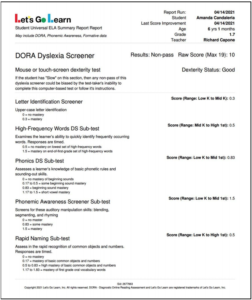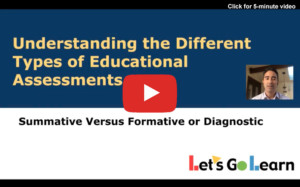DORA Dyslexia Screener
Are Your Students At Risk for Dyslexia?

DORA DS screening identifies early signs of dyslexia for early intervention.
“Universal screening and diagnostic assessment data must inform student strengths and needs that then become the focus of instruction and intervention” (Science of Reading, Defining Guide, 2021).
Dyslexia is a reading disability that makes it difficult for students to master foundations skills related to reading. That’s why LGL developed DORA DS, an online diagnostic assessment that quickly identifies students in grade level K-3 who show risk factors for dyslexia.

DORA DS screens for characteristics of dyslexia.
DORA DS analyzes the following foundational skills to identify students who may be at risk for dyslexia.
- Phonological and Phonemic Awareness
- Sound Symbol Recognition
- Alphabet Knowledge
- Decoding Skills
- Rapid Naming
- Encoding Skills
As part of this quick assessment, DORA DS provides a short mouse/dexterity test. This allows our system to identify false low scores for students who may not be developmentally ready to follow online instructions.
Educators can easily assign and queue students as a class, in groups, or as individuals. The assessment itself takes from 10-15 minutes for most students. Then easy-to-read and interpret reports are available in real time for teachers and parents.
If DORA DS scores indicate that individual students are at risk for dyslexia, our deeper-dive reading assessment series DORA can be assigned. The DORA series diagnostically evaluates each student’s reading abilities while providing the highest level of reliability and accuracy.
The DORA series measures academic reading skills, including phonemic awareness, phonological awareness, phonics, fluency, vocabulary and reading comprehension strategies. The granular data captured by each assessment provides school psychologists, classroom teachers, and special education teachers a comprehensive and actionable picture of each student’s foundational skills, making it possible to identify a potential reading disability.
For more information on how DORA DS complies with best practices, see the International Dyslexia Association’s Universal Screening fact page
Letter Identification Example
The screener identifies K-3 students with difficulties identifying letters of the alphabet. For example, during the screening process, a student hears,“Click on the uppercase letter E.” Students then select a letter from the choices.
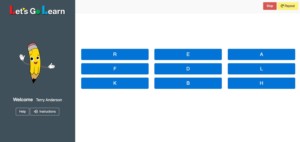
Phonemic Awareness Example
Our screening tool analyzes phonemic awareness skills important in the development of foundational reading skills. For example, the student hears, “Combine the sounds /d/ /o/ /g/. What word do you hear?” The faces on screen wiggle and the student clicks each one to listen to a different word. The student then clicks the face that has the audio that blends the phonemes correctly.
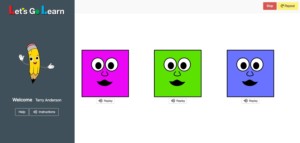
Dexterity Test
As part of our assessment process, DORA DS provides a short bubble-popping test. This allows us to identify false low scores for students who may not be developmentally ready to follow online instructions.
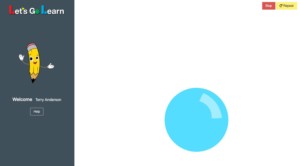
“To support universal reading literacy, we designed DORA DS to give teachers a diagnostic evaluation of gaps in early reading skills that may be indicators of dyslexia. Our screener is appropriate for kindergarteners, 1st grade students, 2nd grade students, and 3rd grade students. With over 20 years of experience in reading diagnosis and personalized instruction, we know that overcoming dyslexia requires early identification and intervention.”

—Richard Capone
CEO and Co-founder
Let’s Go Learn’s Commitment to Universal Literacy
Since 2000, Let’s Go Learn is committed to developing online programs that support universal literacy in K-12 reading and mathematics.
DORA DS is the result of 20+ years of research-based computer-adaptive experience. Our goal with DORA DS is to provide teachers with a quick, easy tool for universal screening. We understand that early intervention is key to catching children before they fall.
Why Are Early Screening and Intervention Essential?
What is the definition of dyslexia? What do the experts say?
Dyslexia is a neurobiological learning disorder that impacts reading proficiency but has no connection to overall intelligence. Not only does it impact about 20% of the U.S. student population, it is the most common learning disability, affecting 80-90 % of all those with a learning disorder. Moreover, of the student population with IEPs, 68% have dyslexia.
Because dyslexia is so common and can have such a serious impact on academic performance, it’s critical that teachers and parents have a good understanding of the signs of dyslexia. Early identification means early intervention.
Symptoms that may indicate dyslexia present in many different ways. In preschool, children may have difficulty learning the alphabet or of finding or making rhymes. As they enter kindergarten and first grade, they may struggle to relate letters to sounds or sounds to words.
At the same time, student may have a great oral vocabulary and listening comprehension. Students with dyslexia may have strengths related to math and display originality, creativity, oral language skills, and problem solving. If dyslexia is left untended, student strengths may go unnoticed with serious academic and personal outcomes.
To ensure the academic success of all students, dyslexia screening measures should include all K-3 students. According to Education Week, 41 states now have legislation mandating dyslexia screening. Districts in these states must now offer quick assessments of the following skills: phonemic and phonological awareness, sound symbol recognition, alphabet knowledge, decoding and encoding skills, and rapid naming skills.
—For more on dyslexia, go to The Yale Center for Dyslexia and Creativity.

How big is the problem?
The most recent results of the National Assessment of Educational Progress for US 4th graders indicate that many have severe reading difficulties. NAEP scores are comprised of Below Basic, Basic, Proficient, and Advanced levels.
- 65% of 4th grade students are not at grade-level in reading skills.
- 34% of students are at a Below Basic level.
- 31% of students are at a Basic level (partial mastery of prerequisite and proficient grade-level reading skills).
- Only 36% of students are at a Proficient level (demonstrated reading competency at grade level).
- Only 9% of students are at Advanced (superior performance at grade level).

Academic Consequences for Struggling Readers
Elementary school, middle school, and high school students who do not reach grade-level reading proficiency may experience academic, social, and career-related difficulties. Research shows that if students are not proficient in reading by the end of 3rd grade, fewer than 12% will finish four years of college. Children with dyslexia may struggle with content areas that require reading proficiency, such as science and history and experience issues with school discipline and attendance. They also drop out of high school at 4 times the rate of proficient readers.
Socio-Economic Consequences of Dyslexia
A diagnosis of dyslexia can have far-reaching personal and socio-economic consequences. It increases the likelihood of “low self-esteem, behavior problems, anxiety, aggression, and withdrawal from friends, parents, and teachers” (Mayo Clinic). A 2020 study of the impact of children with dyslexia found “The life quality of children with learning disabilities is worse than that of typical development children, and the severity of learning disabilities is positively correlated with a poor quality of life” (Huang et al., 2020).
The economic impact of dyslexia also may have a serious economic consequence. The Boston Consulting Group found that in 2020 alone, dyslexia and its consequences cost California an estimated 12 billion. Early screening and teacher training “would provide an astonishing 800% to 2000% return.”
Early Identification Allows
Early Intervention
With early intervention and support, students can overcome dyslexia and go on to fulfill their academic and lifetime dreams.

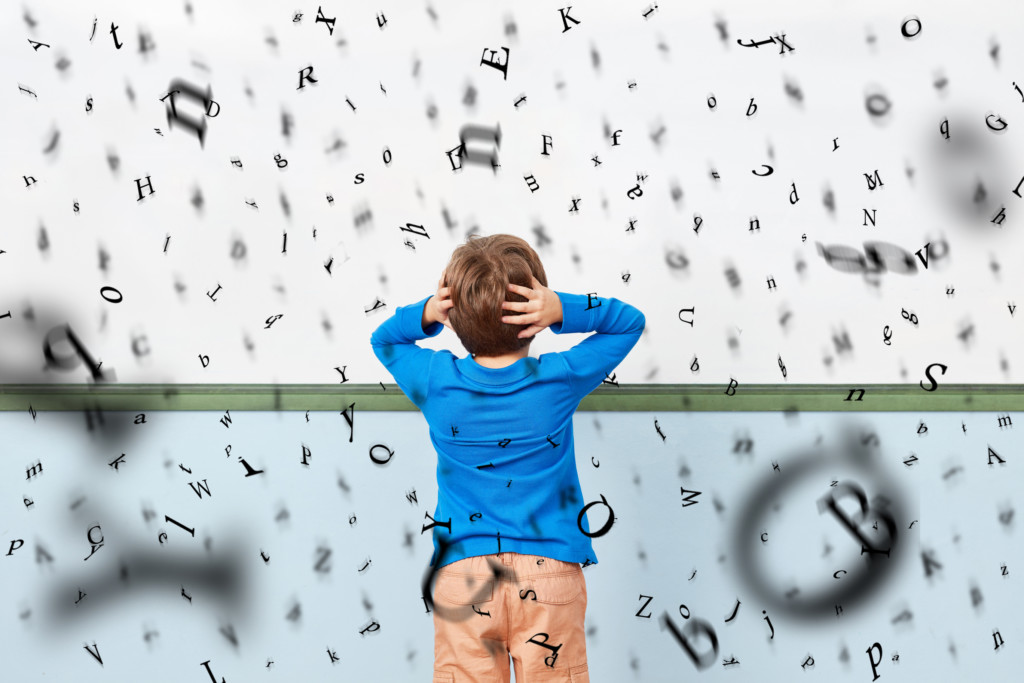
DORA DS Screens for Key Indicators of Early Reading Readiness and Proficiency
As required by most State Education Departments, DORA DS screens a child’s early reading performance in the following areas:
- Phonological and phonemic awareness
- Sound-symbol recognition
- Alphabet knowledge
- Decoding skills
- Rapid naming
- Encoding
Limitations of most
dyslexia screeners
Most dyslexia screeners are available only in print. Those that have partial digital implementations such as Shaywitz Dyslexia Screener present administration challenges or interpretation of special scoring options.
- Print screeners may take 3-4 hours to administer
- Most require teacher training or a professional administrator
- Reporting by ed tech company may take weeks to reach the district

Advantages of Early Screening of Dyslexia with
Online DORA DS
DORA DS was designed with the educator and the student in mind.
- Takes about 10-15 minutes to administer
- Uses adaptive logic to maximize validity and minimize test anxiety
- Ensures social equity with a scores for all students in the key indicators
- Provides automatic real-time analysis and valid reporting at the sub-test level for district teachers and administrators
- Includes a mouse dexterity test to control for test-taking bias
Universal Screening for
RTI and MTSS
Both RTI and MTSS programs require universal screeners.
DORA DS provides a state of the art dyslexia screening assessment.
After automatic administration of DORA DS, administrators and teachers can take advantage of LGL’s full-solution supplemental online reading program.
- DORA K-12 Diagnostic Reading Assessment
- DORA Phonemic Awareness
- DORA Spanish/EDELL
- LGL ELA/Reading Edge Data-Driven Instruction
Common Questions
Can I use the full DORA reading assessment instead of DORA DS? What are the differences?
How does DORA DS compare to the screeners of other companies?
How does DORA DS compare to most print dyslexia screeners?
Can you recommend resources for learning more about dyslexia?
- Center on Multi-Tiered System of Supports: https://mtss4success.org/essential-components/screening
- The Children’s Reading Foundation: https://www.readingfoundation.org/the-impac
- Dyslexia Help University of Michigan: http://dyslexiahelp.umich.edu/
- Dyslexia, Mayo Clinic: https://www.mayoclinic.org/diseases-conditions/dyslexia/symptoms-causes/syc-20353552https://www.mayoclinic.org/diseases-conditions/dyslexia/symptoms-causes/syc-20353552
- National Center for Education and Statistics: https://nces.ed.gov/nationsreportcard/reading/
- NAEP Report Card for: Reading: https://www.nationsreportcard.gov/reading/states/achievement/?grade=4
- RTI Action Network: http://www.rtinetwork.org/learn/research/universal-screening-within-a-rti-model
- Dr. Sally Shaywitz, Overcoming Dyslexia, 2nd ed.
- The Yale Center for Dyslexia and Creativity: https://dyslexia.yale.edu/
- “Three important reasons why we can’t ignore early literacy,” Reading Partners, https://readingpartners.org/blog/three-important-reasons-cant-ignore-early-literacy/
- “The economic impact of dyslexia on California,” The Boston Consulting Group. https://media-publications.bcg.com/The-Economic-Impact-of-Dyslexia-on-California-Whitepaper-Final.pdf
- Correlation between Dyslexia and Criminal Behavior, D. Ankney. https://www.prisonlegalnews.org/news/2019/aug/6/correlation-between-dyslexia-and-criminal-behavior-first-step-act-require-screening-treatment/


